German Genealogy: Learn About Your Ancestor’s Life at a German Museum
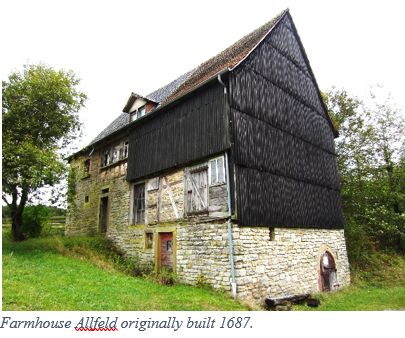 21
21Aug
Part of researching one’s ancestors includes learning about their life. A fun way to do this is to visit a local Heimatmuseum (hometown German museum) or Freilicht- or Freilandmuseum (open air museum) during a trip to Germany. These are great places to see local historical buildings and to learn about various trades and occupations. If a personal visit is not feasible, checking out a museum’s webpage may be a fun alternative. A few examples are listed at the end of the article.
This article shares some of the things learned from a visit to the Odenwälder open-air German museum in Walldürn-Gottersdorf, Baden-Württemberg, Germany.[1]
Farming was a common occupation in the past, and many different words are used in German records to describe the occupation of farmer, including Bauer, Landwirth, Halbbauer, Ökonom, Hufner, Gaardmand, Ackermann, Gütler, Achtelbauer to name just a few. The use of some words varies with the region, such as Gaardmand and Ökonom. Some words, such as Halbbauer or Achtelbauer are more descriptive or indicative of the amount of land that was owned.
 The farmer’s residence varied in size and style. It was typical for the family residence and small animal stable to be under the same roof. Adjustments were made, as needed.
The farmer’s residence varied in size and style. It was typical for the family residence and small animal stable to be under the same roof. Adjustments were made, as needed.
It was common for land to be divided among descendants. However, the farmhouses and outbuildings were also divided among the direct descendants. Usually, the house was divided by floor, however, in this example, a cross division took place. An additional entrance was created, and other adjustments made.
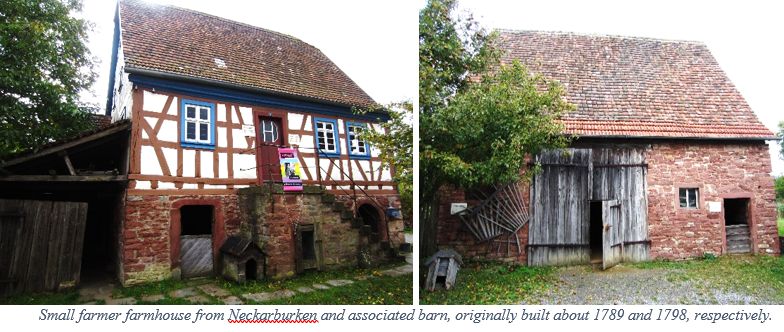 The Kleinbauer (small farmer) farmhouse above also included the local post office for a while. Due to a WWI injury, the farmer’s brother was unable to help out on the farm, so he worked as the postal agent.
The Kleinbauer (small farmer) farmhouse above also included the local post office for a while. Due to a WWI injury, the farmer’s brother was unable to help out on the farm, so he worked as the postal agent.
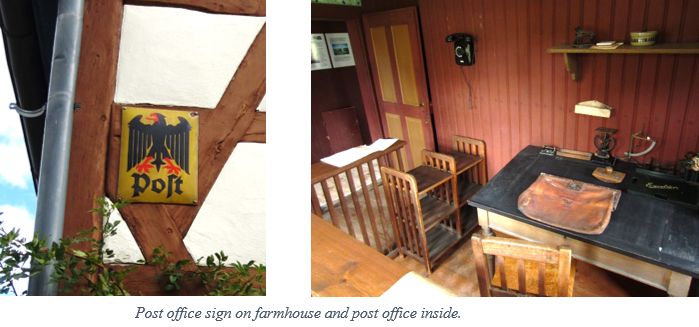
Day laborer or cottager (Tagelöhner, Söldner, Häusler)
A day laborer may live in a very small farm house or may occupy one or two rooms in a larger farmhouse.[2] He did not own enough land to support himself, so he took on extra jobs.
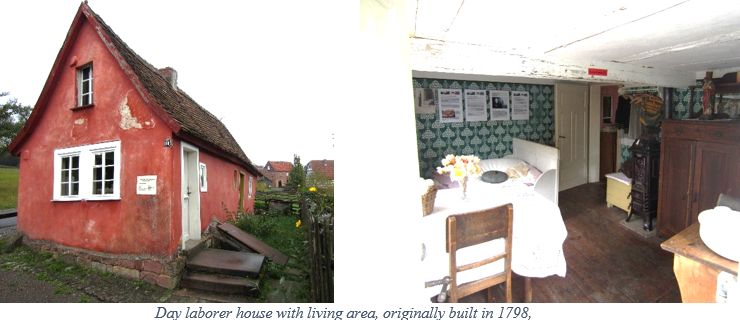
When the first part of this house was built in 1798, it consisted of a room and a kitchen with a combined floorspace of about 4 by 6 meters (13.1 by 19.7 feet) and height of 1.80 m (5.9 ft). Later, a second room and a small animal stable was added on.
Midwife (Hebamme)
Midwives had a similar status as a doctor in the village. They assisted with births within a given village. Sometimes, a group of villages formed a “midwife district” where one midwife worked in and was supported by multiple villages. Midwives received payment for each delivery, postpartum visits, a set amount of income from the village(s) and a discount on wood.
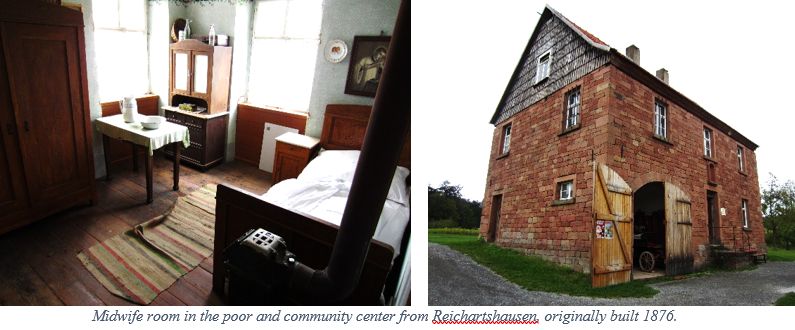
Poor and community center
This building served many purposes. In addition to providing a room for the local midwife, it was also the village fire department. A poor shoemaker and his family also lived here for a while. He was given space for a workshop on the top floor.
The community had a responsibility to care for the poor in the village, providing room for little to no rent. Individuals had to submit an application to the mayor and city council. Eligibility was regularly reviewed. If the person was not a local citizen, he had to move out after nine years to avoid gaining citizenship by squatting.
During both world wars, French, Russian, Polish prisoners of war (forced laborers) were housed in a corner room (note barred windows).
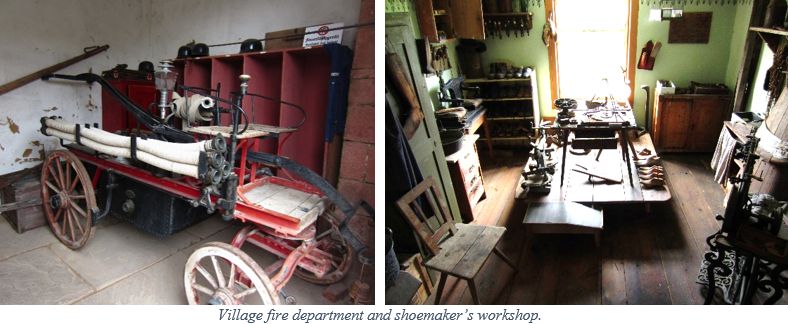
Shoemaker (Schumacher, Schuster)
In a farming village, a shoemaker was primarily a shoe mender. There was not much money for new shoes. Long-lasting working shoes were in high demand. The longevity of a shoe was extended with nails and shoe irons, along with repeated mending and patching.
Below are a few links to some open-air museums you may enjoy exploring online:
Middle Franconia
Fränkisches Freilandmuseum Bad Windsheim, Bavaria. This website includes a selection of digital tours of different museum sections. https://freilandmuseum.de/
Westphalia-Lippe
LWL-Freilichtmusem Hagen, Hagen, North Rhine-Westphalia. The workshops section includes several short videos demonstrating and explaining the process of making rope, nails, paper, etc. https://www.lwl-freilichtmuseum-hagen.de/de/
For an interactive 365-degree digital view of this German museum: https://www.lwl.org/365-download/panorama/freilichtmuseum.html.
Lower Saxony
Freilichtmuseum am Kiekeberg, Rosengarten-Ehestorf, Lower Saxony. Explore their webpage to enjoy the pictures and interactive map of this German museum. https://www.kiekeberg-museum.de/
Hopefully, you will add a visit to a local museum or two when you have the opportunity to visit your ancestral homeland. Price Genealogy is happy to help you research and learn more about your German ancestors, click here today to contact us!
Gina
[1] Odenwälder Freilandmuseum, Weiherstraße 12, 74731 Walldürn-Gottersdorf, Baden-Württemberg, Germany. https://www.freilandmuseum.com.
[2] Derek Gill Franßen, “Söldner,” Proz.com (https://www.proz.com/kudoz/german-to-english/certificates-diplomas-licenses-cvs/3699571-s%C3%B6ldner.html), 16 February 2010.
